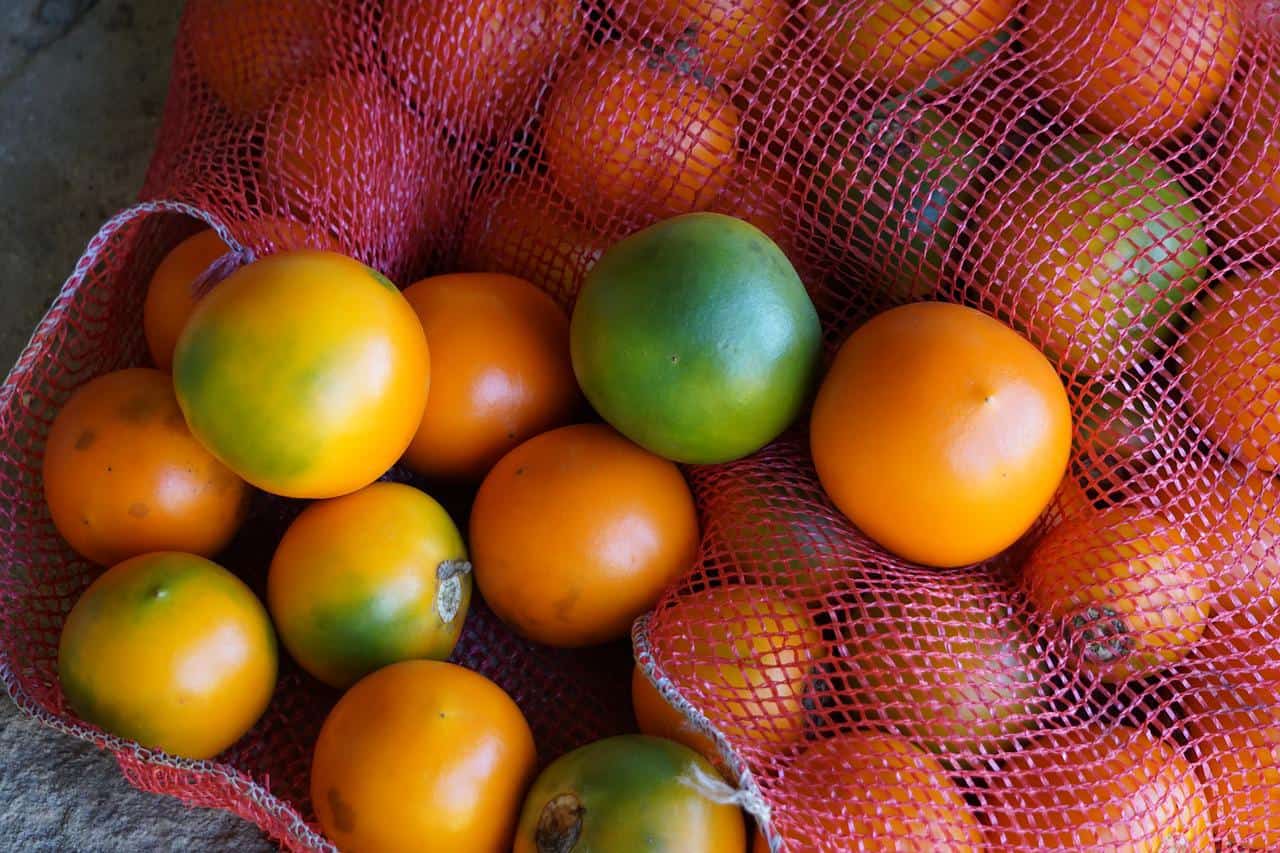Here’s another curiosity plant that’s a specialty for highland gardeners. You may be familiar with naranjilla, a popular fruit drink in Costa Rican sodas and restaurants.
The fruit naranjilla (Solanum quitoense), or “little orange,” as it’s translated in English, is actually a member of the Solanaceae family, so it’s closer to a tomato or an eggplant than an orange.
Botanical researchers believe this plant originated in the Andes in what is now Ecuador, where it is referred to as lulo or nuquí. It was spread through the American tropics by indigenous tribes traveling on their trade routes from one region to another. Most likely it was introduced to the Spanish colonists by local tribes, and has remained a popular fruit drink with the locals.
Easy to identify in markets, the fruit is about the size of a tennis ball, green to orange in color. Inside each fruit you’ll find a greenish pulp divided into four membranous sections with many seeds. The plant reaches one to two meters tall and has spiny stems and leaves. It can be found growing in partially shaded areas of the forest, where it is adapted to capturing the filtered sunlight.
Naranjilla grows best at elevations between 1,200 and 2,100 meters, where it is grown commercially. Even so, it grows marginally in home gardens in the intermediate regions of Costa Rica. The plant grows quickly and produces fruit in 10 to 12 months, almost continually through the year when grown in the shade.
You can start your own naranjilla plants at home from seeds collected from fruits available in local markets. Plant one or two seeds in a pot of prepared potting soil. Keep the soil moist during germination, and be sure to transplant the seedling plants to permanent sites before they become root-bound.
Shady areas with partial sunlight are best, since these plants suffer from the heat and drought of the dry season if planted in full sun, which will affect fruit production.
Naranjilla plants respond well to applications of rich compost fertilizer, which keeps them growing vigorously and producing fruit. This hardy plant suffers from no serious pest problems or diseases.
The ripe fruits can be harvested to make fruit drinks, marmalades and desserts. Costa Ricans usually cook the acidic, seedy pulp in water with sugar, then strain and cool to make frescos (fruit drinks), but you can also simply blend the fruit pulp with honey, strain and serve with crushed ice. What a flavor!
And for jellies, jams and marmalades, simply substitute the strained pulp in your favorite recipes.






